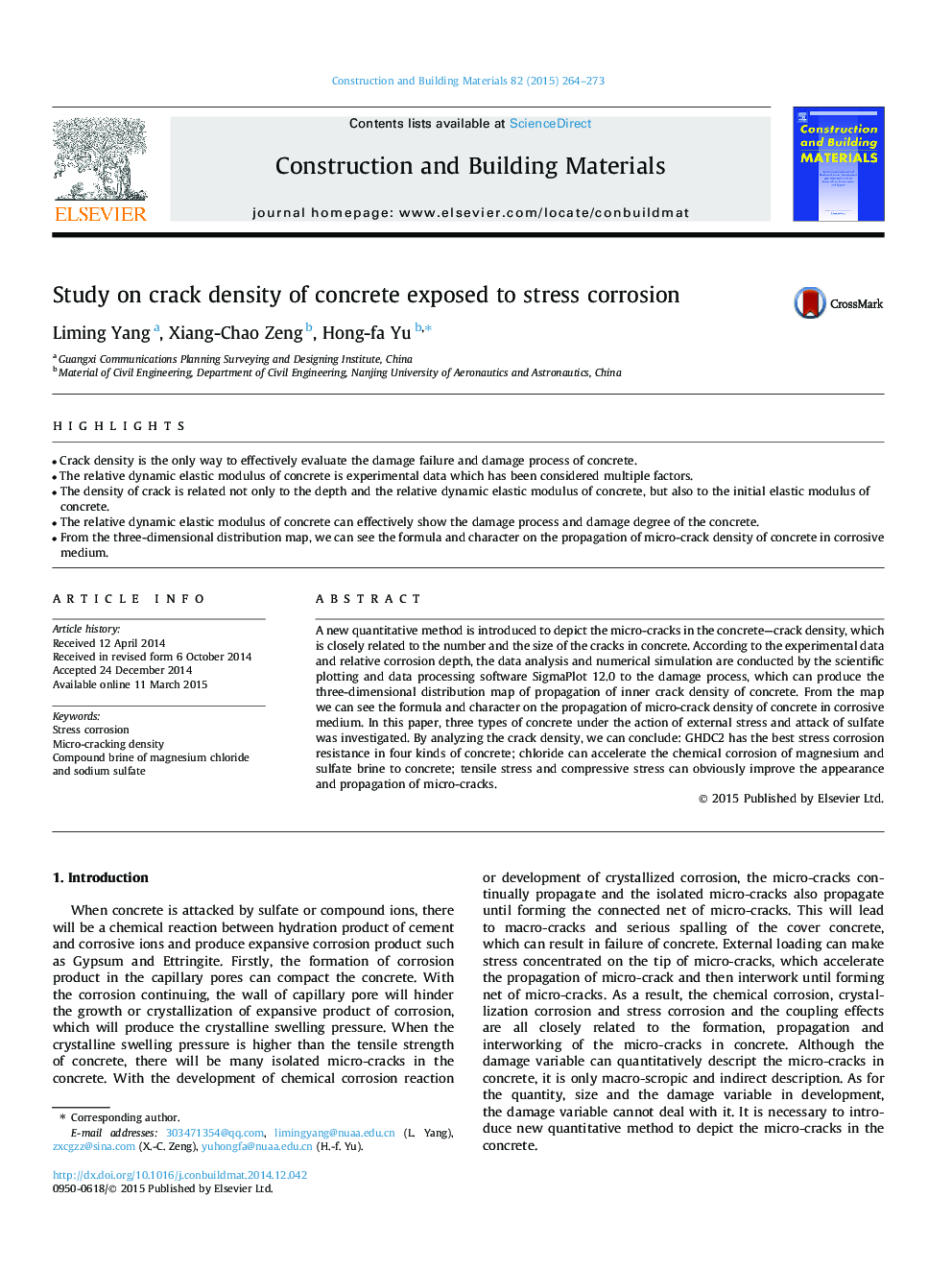| Article ID | Journal | Published Year | Pages | File Type |
|---|---|---|---|---|
| 256932 | Construction and Building Materials | 2015 | 10 Pages |
•Crack density is the only way to effectively evaluate the damage failure and damage process of concrete.•The relative dynamic elastic modulus of concrete is experimental data which has been considered multiple factors.•The density of crack is related not only to the depth and the relative dynamic elastic modulus of concrete, but also to the initial elastic modulus of concrete.•The relative dynamic elastic modulus of concrete can effectively show the damage process and damage degree of the concrete.•From the three-dimensional distribution map, we can see the formula and character on the propagation of micro-crack density of concrete in corrosive medium.
A new quantitative method is introduced to depict the micro-cracks in the concrete—crack density, which is closely related to the number and the size of the cracks in concrete. According to the experimental data and relative corrosion depth, the data analysis and numerical simulation are conducted by the scientific plotting and data processing software SigmaPlot 12.0 to the damage process, which can produce the three-dimensional distribution map of propagation of inner crack density of concrete. From the map we can see the formula and character on the propagation of micro-crack density of concrete in corrosive medium. In this paper, three types of concrete under the action of external stress and attack of sulfate was investigated. By analyzing the crack density, we can conclude: GHDC2 has the best stress corrosion resistance in four kinds of concrete; chloride can accelerate the chemical corrosion of magnesium and sulfate brine to concrete; tensile stress and compressive stress can obviously improve the appearance and propagation of micro-cracks.
